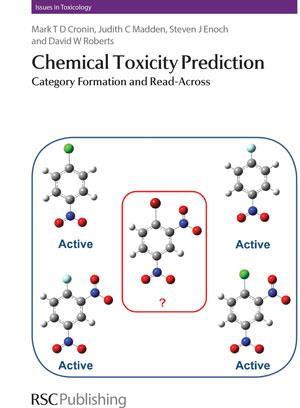Safety screen
Mark Cronin, Judith Madden, Steven Enoch and David Roberts
Royal Society of Chemistry
2013 | 180pp | £114.99
ISBN 9781849733847

The fact that similar objects tend to possess similar properties is a hugely important concept when applied to chemistry and toxicology.
Essentially, this concept allows the grouping of chemicals into categories, whereby the properties of the chemicals in a particular category are relatively similar. The amount of information available for each of those chemicals may, however, be very different.
Some chemicals may have been assessed for their potential toxic properties in certain strains of bacterial, animal or human cells, while others may have been tested in animals in vivo, and for others yet, the response in a whole human may have been characterised. Hence, can we infer the activities, toxicities or other properties of a chemical by ‘reading across’ between chemicals within a category?
The real challenge here is placing a novel, untested chemical into a category and being able to predict confidently its toxicological potential in humans.
The interdisciplinary approach where toxicologists, computational modellers and medicinal chemists are able to speak a common language is a rapidly expanding field with greater numbers of publications each year. This excellent and well-written book fits directly into that category.
The book is divided into eight chapters, across 180 pages. There are chapters introducing chemical grouping and the different approaches used, how to define the chemical categories in which to place these compounds, which tools are available, the sources and quality of information, selected case studies, validation of these methods for regulatory acceptance and, finally, predicting what the future holds for this area. Throughout, the book provides practical solutions for scientists wishing to perform ‘read across’, and identifies where more research and collaboration are needed.
The book is written in such a clear way that it is easily understandable by scientists from different fields, which we can safely predict will ultimately contribute to the success of this emerging discipline.
Purchase Chemical toxicity prediction from Amazon.co.uk












No comments yet